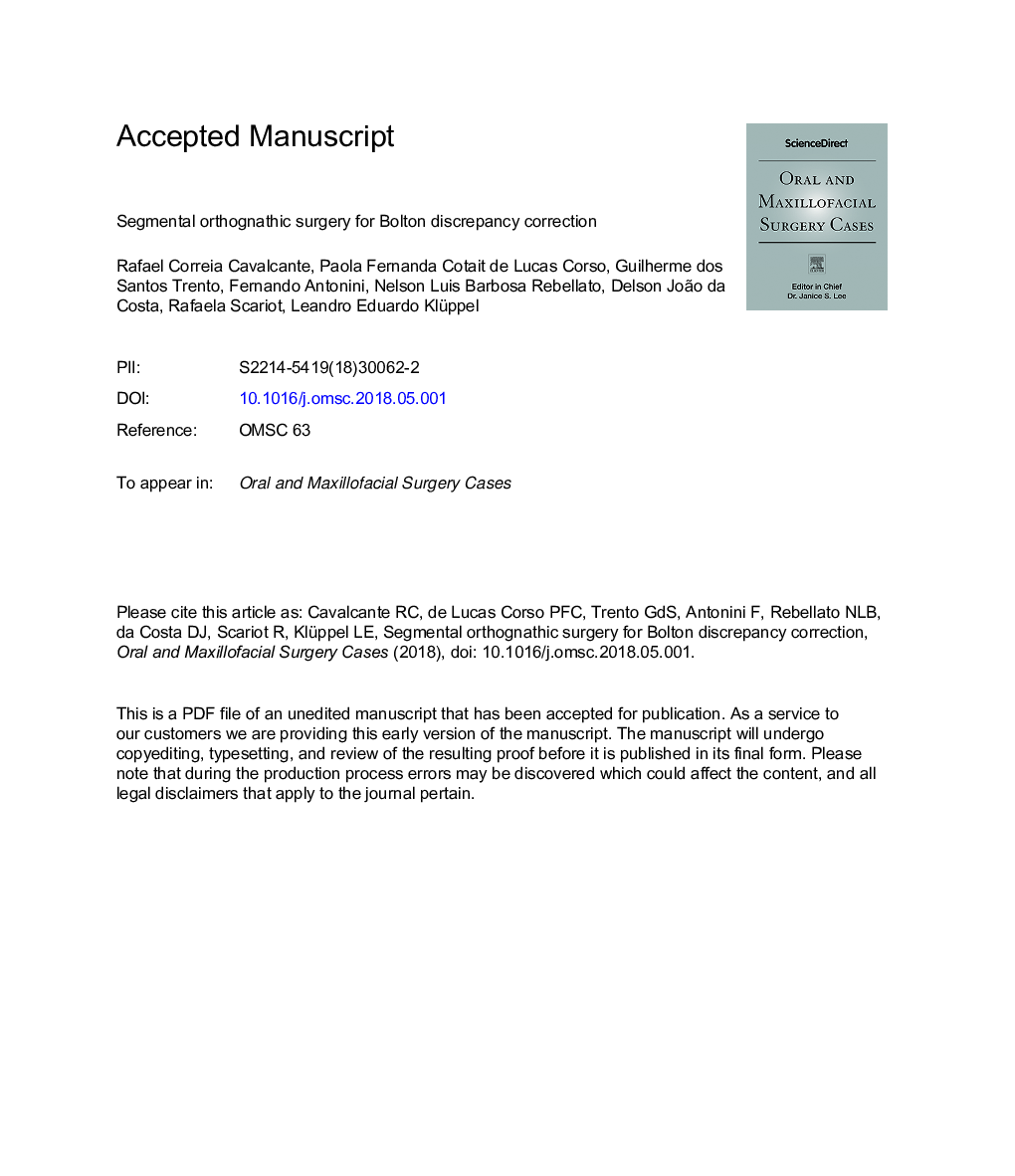| Article ID | Journal | Published Year | Pages | File Type |
|---|---|---|---|---|
| 8706984 | Oral and Maxillofacial Surgery Cases | 2018 | 19 Pages |
Abstract
In association with orthodontic treatment, orthognathic surgery can solve different types of malocclusion amongst dentofacial deformities. Bolton analysis is frequently used to measure the mesiodistal relationship between maxillary and mandibular teeth. When Bolton discrepancy is caused by excessive anteroinferior dental volume, it can be corrected in different ways: selective interproximal dental stripping, changes in buccolingual or mesiodistal angulation of anterior teeth, mandibular incisor extraction or by creating space in the upper jaw between laterals and canines. In more severe Bolton discrepancy cases, however, such corrective maneuvers may not be sufficient to achieve adequate occlusion, turning surgery a suitable treatment choice. The main purpose of this paper is to report a case of a segmental orthognatic surgery to correct Bolton Discrepancy. Mandibular incisor extraction (41) associated with mandibular osteotomy to arch constriction was planned to consequently achieve adequate occlusion and facial harmony. Mandibular fragments were mobilized followed by bilateral sagittal split osteotomy. Constriction was conducted accordingly with bone removed from symphysis and segments were fixed with titanium plates and screws (system 2.0). Dental and skeletal transversal pre-existing discrepancy was corrected suggesting that a meticulous surgical planning associated with adequate dental and skeletal mensuration are mandatory to diagnose and treat Bolton discrepancy. Patients' follow-up showed suitable maxillo-mandibular relationship as well as occlusion stability.
Related Topics
Health Sciences
Medicine and Dentistry
Dentistry, Oral Surgery and Medicine
Authors
Rafael Correia Cavalcante, Paola Fernanda Cotait de Lucas Corso, Guilherme dos Santos Trento, Fernando Antonini, Nelson Luis Barbosa Rebellato, Delson João da Costa, Rafaela Scariot, Leandro Eduardo Klüppel,
